New bi-weekly Monday series. By popular vote you selected this streaming film for screening & discussion...
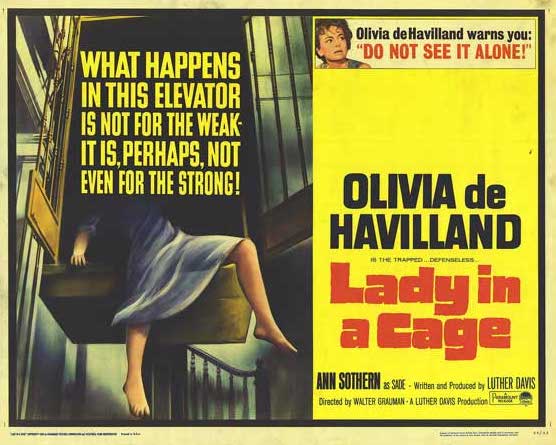
by Nathaniel R
Where did the sayings "wear your influences / heart on your sleeves" originate? No matter the etymology of the phrase we think it disagrees with fussy widow Mrs Cornelia Hilyard. Her billowy sleeves aren't half as expressive as the sheer scarf and shawl like top over her simple house dress. She fidgets with it constantly, untying and unbuttoning the extra layer of fabric due to the unfortunate duet of a broken air conditioner and a great lady's modesty!
The influences and emotions clinging visibly to this lady in her cage, or rather Lady in a Cage (1964), are much the same. Screenwriter Luther Davis and Director Walter Grauman throw just about everything they can think of that was cinematically en vogue or brazenly attention-grabbing in the early 1960s into the mix (drug use! homosexuality! juvenile delinquents! sex! formerly glamorous leading ladies getting sweaty and desperate and humiliated for your viewing pleasure). The film's sociopathic parents -- its daddy is Psycho and its mommy is Whatever Happened to Baby Jane -- have cast a long historical shadow over Lady in a Cage...
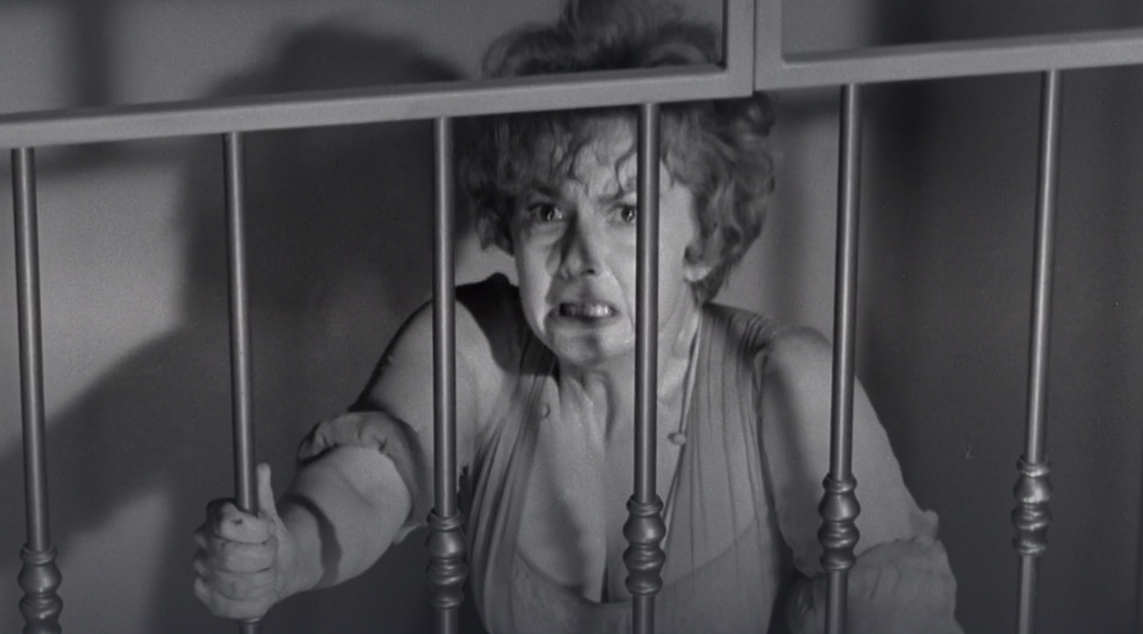
Yet, despite its obvious and (deservedly) famous cinematic parentage, Lady in a Cage , develops its own curious personality. It's a worthy stream on Hulu if you're up for it and, if you are ,do that before continuing (as spoilers follow)
Before this Lady finds her own voice, we must escape her parents. Let's start with Daddy since he's largely absent while Mom hovers.
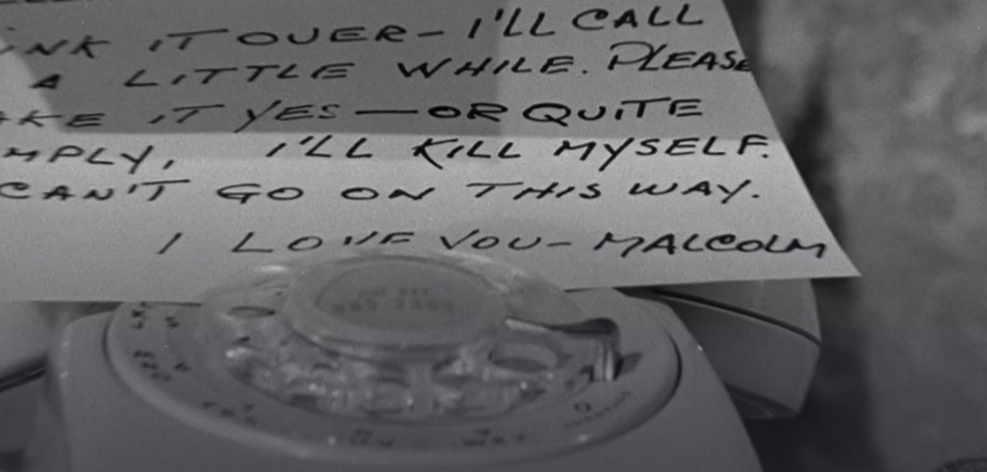
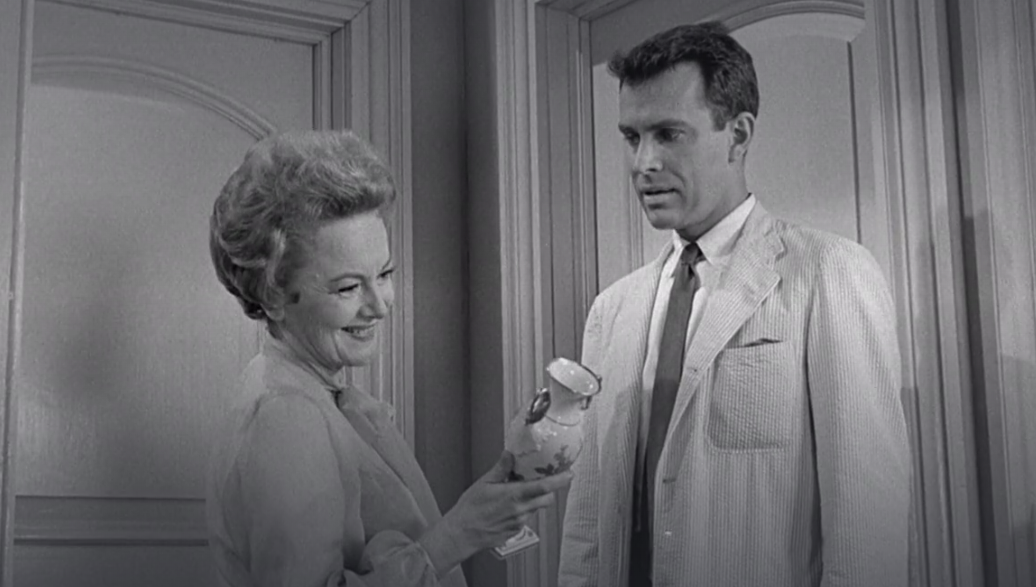
Psycho (1960) was a game changer for Hollywood and horror films in general. One could even argue that it (psychologically) spawned the unflatteringly named 'hagsploitation' subgenre because monstrous older women don't come more fearsome than Norman Bates's "Mother". Lady in a Cage like Baby Jane before it, follows Psycho's uber profitable recipe: low budget, small cast, black and white film, shocking content with disturbing psychology, and the use of predominantly one set for an entire film. But that's not the only way in which Psycho shows up.
The title cards, all staccato jumpy with broken straight lines, and the score (by Paul Glass) are both yearning to be associated with the classic blockbuster. The opening shot borrows Psycho's invasive camera trick while entering a private space; instead of a window into a hotel room where an illicit affair is taking place, we go through an air-conditioner (fun) into a bedroom where a man is writing a suicide note. Malcolm (William Swan, a TV regular in the 1960s who looks a bit like Tony Perkins), is Mrs Hilyard's too-beloved son. Like Janet Leigh lifting her boss's money at the start of Psycho, his note is something of a red herring though it keeps cropping back up like Marion Crane's theft.
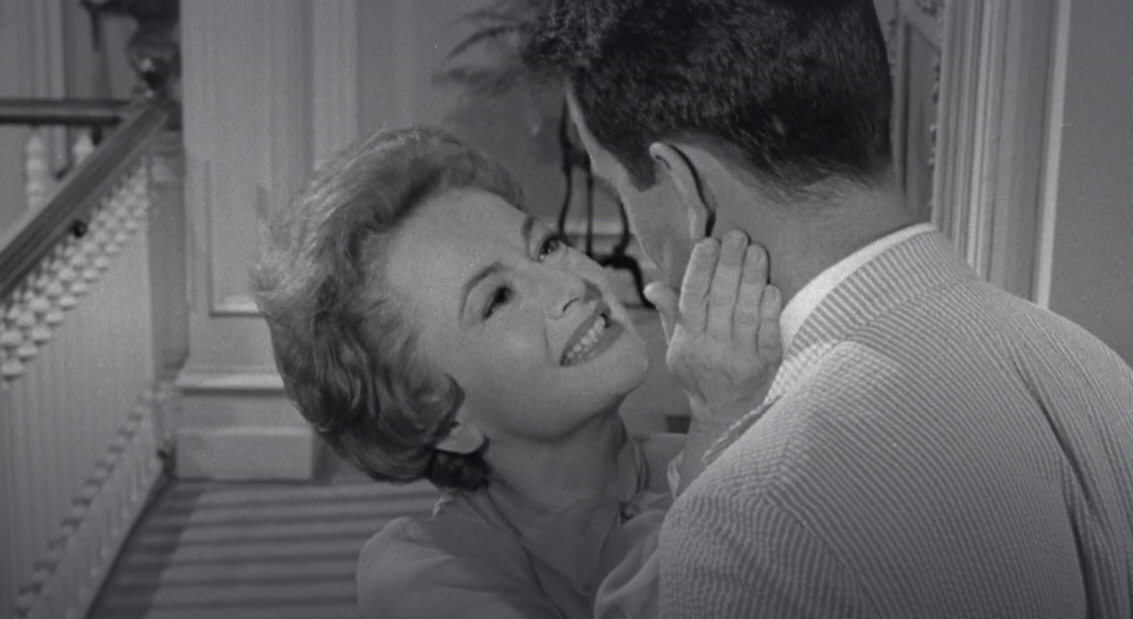 Mom flirting with son. Eww.
Mom flirting with son. Eww.
Turns out Malcolm is a red herring, too, in his own awkward way. He's eager to get the hell out from under his dominating mother and as he walks out the door, Psycho (mostly) goes with him but for the lingering feeling of a vaguely incestuous mother/son relationship. Swan doesn't convey enough personality to suggest that he's going to go all murderous in the future (not even on himself) and for that matter his mother is hardly a "monster"
Though she is handful, let's be honest.
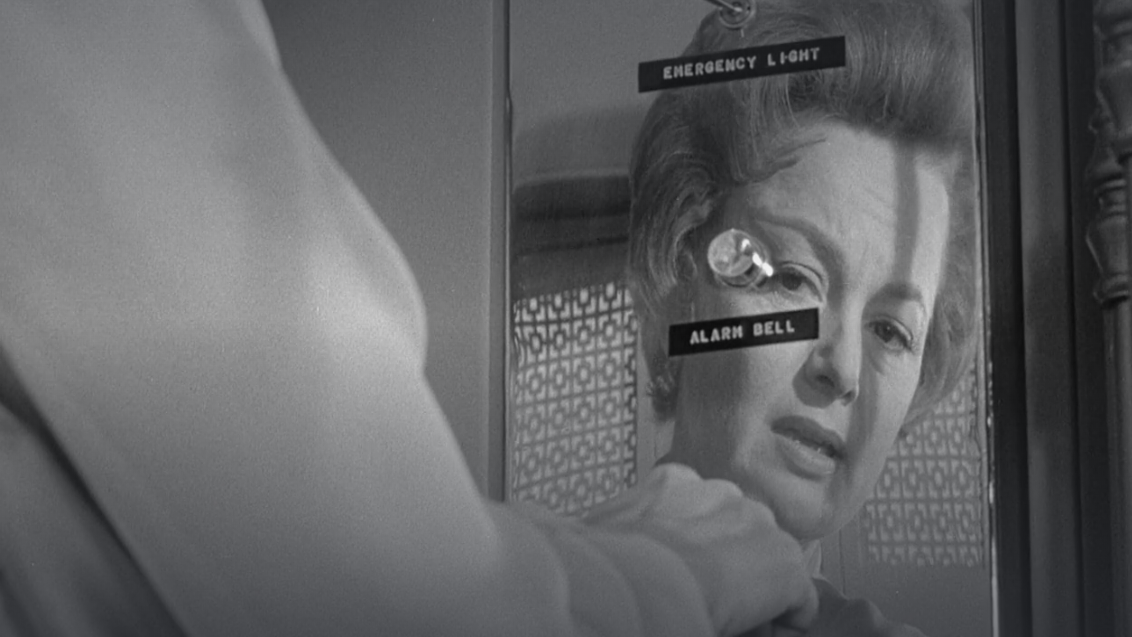
It's unclear how much of Lady in a Cage's sense of humor is "new" via its (slight) camp appeal now and how much was there all long (it's definitely not as self aware as Baby Jane) but the great lady Olivia de Havilland really fusses up her wealthy widow. And it's here that you immediately realize that Lady in a Cage's true cinematic mother is not Baby Jane Hudson at all but, rather, Blanche Hudson (Joan Crawford), a "crippled" woman trapped in her own house.
The wealthy Mrs Hilyard has just had hip surgery so she's using a newly installed elevator for her three-story house. Not only is she a 'lady of letters' who recites her own poetry and laughs at her own jokes but she can't even take a private elevator without smelling flowers, turning on some calming elevator music via a handheld private radio, and reading a book. ALL SIMULTANEOUSLY. I giggled dear reader, I giggled. This woman is NOT prepared to be suddenly thrust into the humiliations of a B movie thriller. Terrible things are about to happen to her. Which begins with her getting stuck in her elevator, too high to jump down given that faulty hip. Before too long she's got her firstt invader, a drunkard who begins trashing her home.
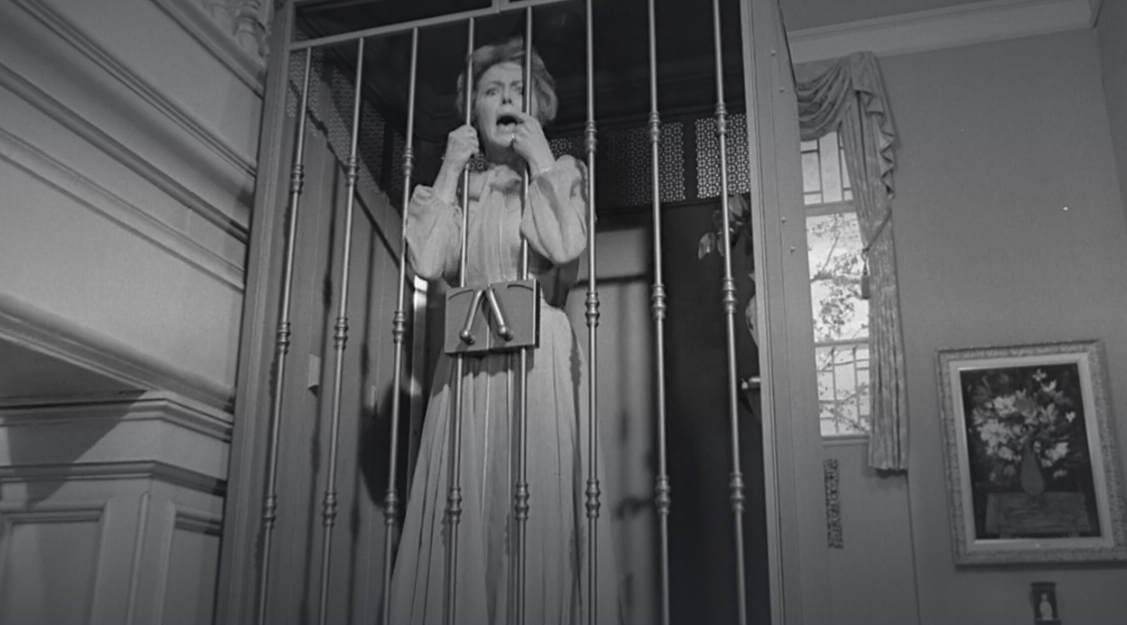
HELP! HELP!!!
Though Grauman didn't have much of a career as a feature director moving to TV and staying there (he directed 53 episodes of Murder She Wrote toward the end of his career), he was reportedly quite proud of Lady in a Cage and of Olivia's performance. In both cases his pride wasn't misfounded. The nature of the plot, for example, is physically static but Lady in the Cage is never boring and Grauman and his editor and cinematographer find all sorts of ways to vary up the visuals alternating between inspired macro close-ups, sudden zooms, and interesting camera angles. Two time Oscar winner de Havilland, who was excellent in Hush Hush Sweet Charlotte this same year -- curiously both roles were originally meant for Joan Crawford -- really gives herself over to the sweaty hysteria of this disreputable genre. Her character work emphasizes that Mrs Hilyard herself doesn't belong in something so crass... thus amping up the forbidden B movie pleasure yet more.
And herewith lies one of the most curious things about the movie. It's arguably a bit 'right wing,' if you will. Mrs Hilyard is never really interrogated beyond the suggestion of smothering her son and thus becomes something of a martyr and saint. She refers to one of the hoodlums that attack her as "the offal of the welfare class" and the movie resolutely supports her disgust. While the movie never directly addresses race, there are uncomfortable moments there, too, with one of the most violent home invaders a strung out Latino. Black characters (including an early role for Scatman Crothers) are mostly absent but always oblivious to her despair. One might not have even noticed this but for a curious insert during the title cards when a young black girl runs her rollerskates down a homeless man's leg, ignoring his discomfort. The street scene cutaways and the sound mix of urban noise throughout the movie are surely meant to convey dehumanizing urban callousness. No one ever hears Mrs Hilyard's cries for help, and no one even notices when she eventually drags herself out on the front lawn with the killer attempting to drag her back in.
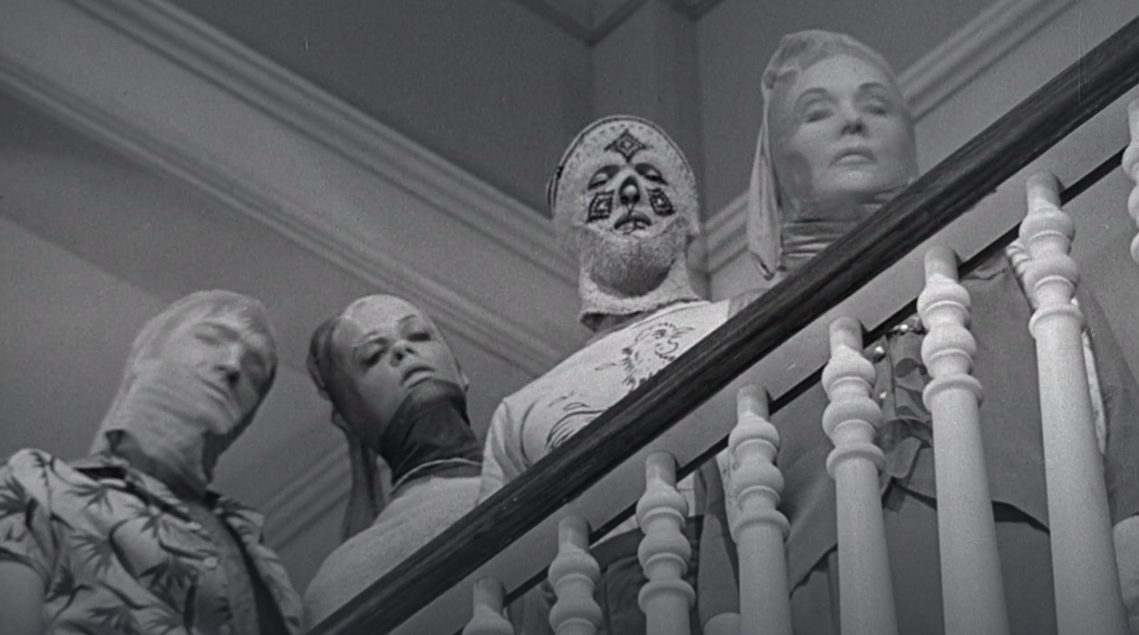
But political discomforts aside, the movie really plays. It helps that the screenplay is fun and layered. Luther Davis, who wrote for film, TV, and stage (Tony win) has a true showman's instinct and eagerly mixes things up on multiple occassion. The best and most nihilistic detail is that each time you think you have met the villain, another group of villains emerge; the hierarchy of villains complicates the movie in wonderful ways.
Among the villains there are two major standouts.
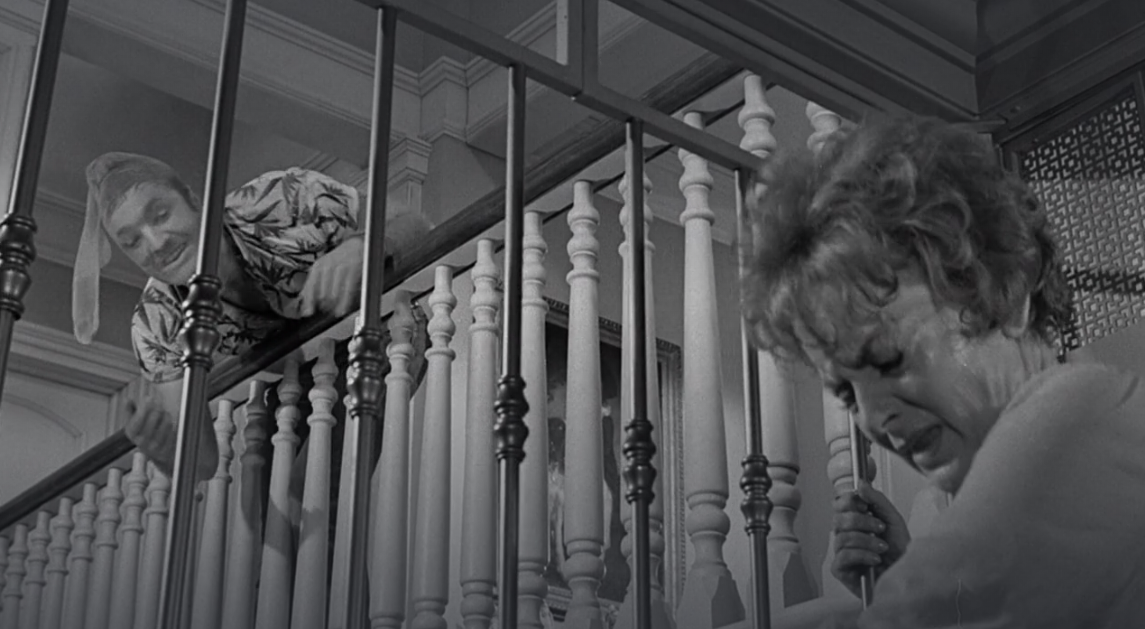 James Caan is legitimately scary in his screen debut
James Caan is legitimately scary in his screen debut
STEAL AND GET OUT. STEAL AND GET OUT. WHAT SORT OF CREATURES ARE YOU?
Furry James Caan proves a major presence in his screen debut, all feral provocation and threat. Though the movie never quite goes as far as the actor, Caan is willing to push this movie straight into madness. He doesn't threaten to rape Mrs Hilyard but his Randall O'Connell is as blatantly sexual as he is violent, and you worry when he climbs into the elevator with her. He also lets loose a particularly crass quip about Malcolm in the showers to his horrified mother, all but shoving her absent son's homosexuality into her face. Caan would of course become a major leading man in the early 70s (The Godfather, Cinderella Liberty, The Gambler, Funny Lady). This debut performance isn't as nuanced as his later work but he's already got the chops and charisma... he just needs time to hone them.
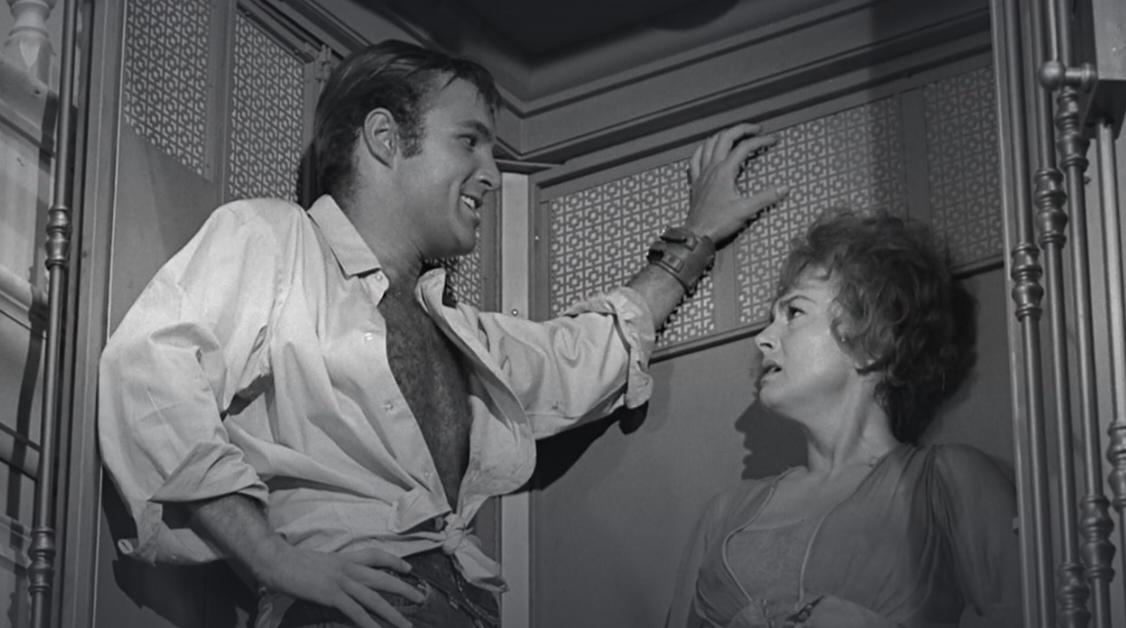
Kept ol' foxy here alive for a few more minutes, didn't it Foxy?
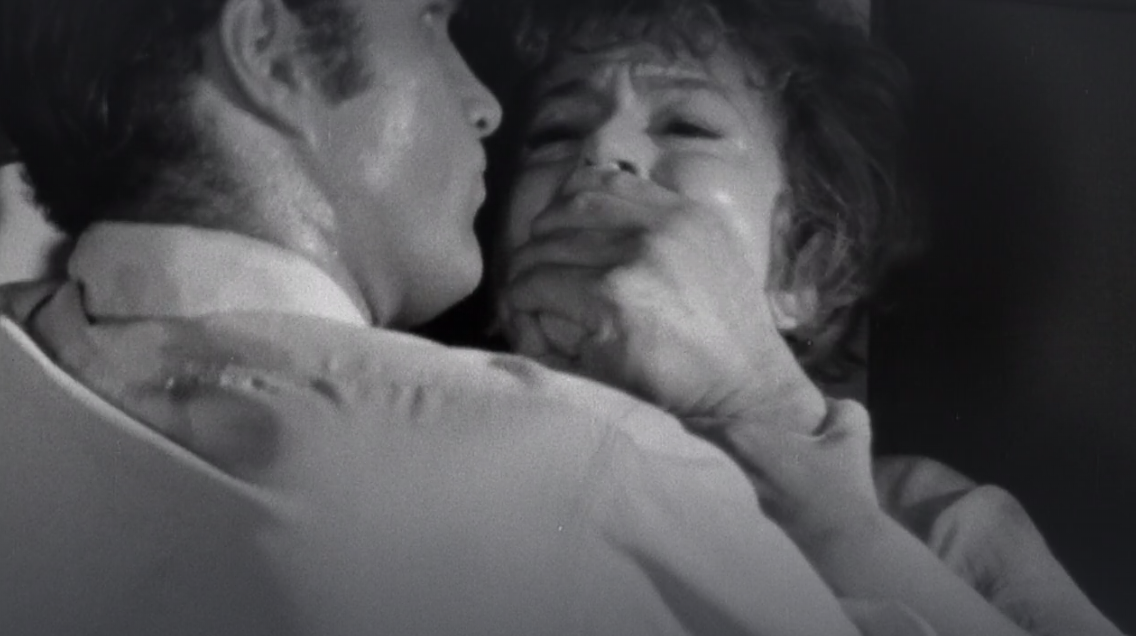 James Caan vs Olivia de Havilland - you totally feel it
James Caan vs Olivia de Havilland - you totally feel it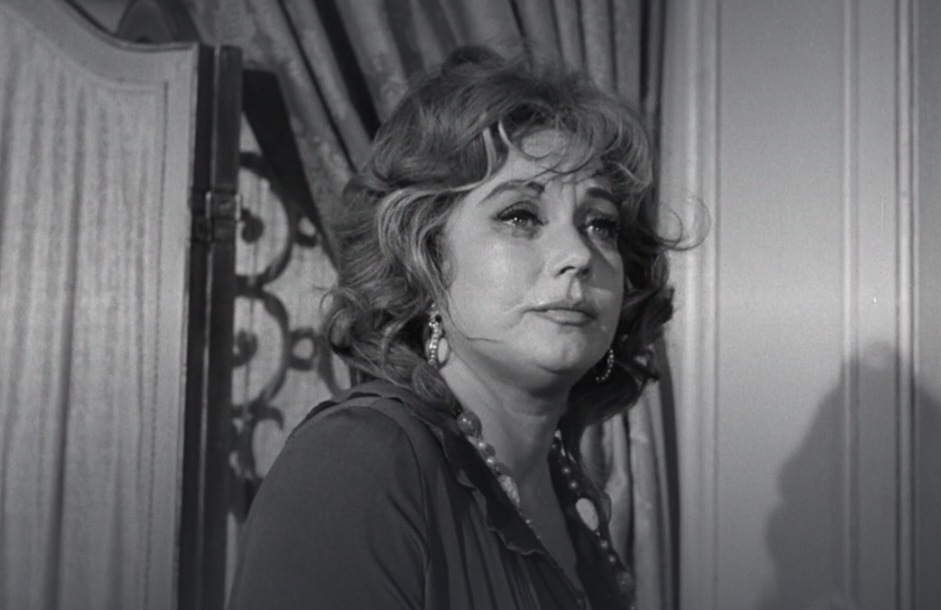
I ain't even a user. I'm just a hustler.
Though she doesn't quite steal the show given Caan's full-throttle villainy and Olivia's game desperation, Lady in the Cage is first livened up by Ann Sothern's blowsy work as Sade a former prostitute who can't resist some larceny when its presented as easy money. Sothern's criminal is like a low-rent Liz Taylor in harridan mode (before she got there) and she's amazing in every scene, not least because she's the only criminal with dimension. Sade eventually feels as much fear as Mrs Hilyard and also regret and sympathy for the evil mess she willingly helped create.
This thriller's perpetual mental and physical escalation despite the original static predicament is quite a B movie feat if you stop to consider it. Sadly the movie was as marginalized in its day ("reprehensible" wrote the New York Times) and then discarded for time just like "fat Sade" . That memorable thief enters the movie eager for her own piece of the pie, only to be forgotten by the movie itself; the other villains meet horrible ends (particularly James Caan with a grisly fate that actually shocks) or drive away to their pawn shop headquarters. But, for all we know, Sade is still hiding in the big rich house when the credits roll.
Her fate is not unlike Lady in a Cage's own. It emerged in a brief window of time when "grande dame guignol" or "hagsplotiation" were all the rage, hoping for a quick score, only to be forgotten. Both Sade and Lady in a Cage deserved better.
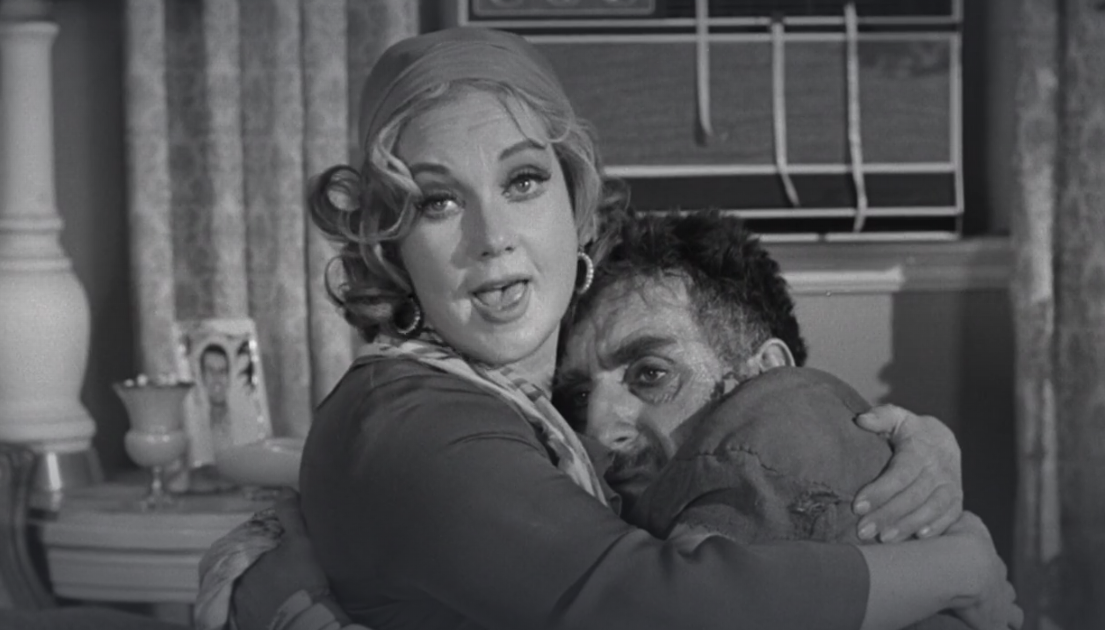
Gee, thanks so much.
Previously on Reader's Choice:
Episode 1: Failed Oscar bait Voyage of the Damned (1976)